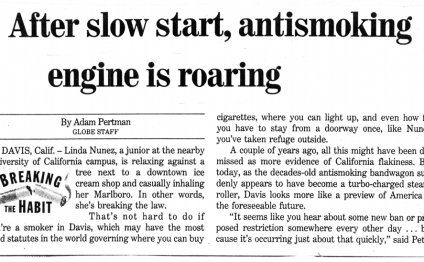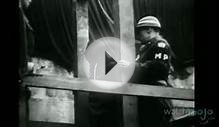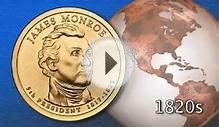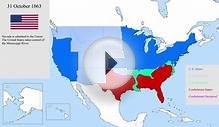
History of tobacco in the United States
600 BC First tobacco plant grows in the Americas
1 BC American inhabitants begin smoking tobacco
1492 Columbus finds tobacco in the “New World” and takes it back to Europe.
1612 The first tobacco plantation is established in the United States.
1619 First Africans are brought to Jamestown to work in agriculture, including tobacco.
1661 Slavery is legalized in Virginia, providing ready sources of workers for tobacco farming in the state.
1760 P. Lorillard establishes a tobacco manufacturing company in New York.
1762 Cigar smoking is introduced to the United States.
1776 Tobacco helps finance the Revolution by serving as collateral for loans from France.
1830 First organized anti-tobacco movement in the United States begins as an adjunct to the Temperance Movement.
1847 Philip Morris opens a shop in England selling hand-rolled Turkish cigars.
1849 John E. Liggett opens a tobacco establishment in St. Louis, Mo.
1852
Matches are introduced, making smoking more convenient.
1858 Robert Morris and his son establish the first tobacco factory in Durham, NC, manufacturing “Best Flavored Spanish Smoking Tobacco” for pipes.
1864 The first American cigarette factory opens.
1875 R.J. Reynolds opens a company to produce chewing tobacco.
1890 The Duke family establishes the American Tobacco Company.
1890 “Tobacco” appears for the first time in the US Pharmacopoeia, the official government listing of drugs.
1894
Brown & Williamson form a partnership in Winston-Salem, making mostly plug, snuff and pipe tobacco products.
1899 The R.J. Reynolds Tobacco Company incorporates.
1902 The British American Tobacco Company is formed.
1902 Philip Morris comes to the United States to sell cigarettes.
1905 The listing for nicotine is removed from the US Pharmacopoeia.
1906 The R.J. Reynolds Company introduces Prince Albert pipe tobacco.
1907 U.S. Justice Department files anti-trust charges against the American Tobacco Company.
1913 American Society for the Control of Cancer, predecessor of the American Cancer Society, is formed.
1913 RJ Reynolds introduces Camel, an event that is often characterized as the birth of the modern cigarette.
1917-18 Cigarettes are included in soldiers’ rations during World War I.
1919 Manufactured cigarettes surpass smoking tobacco in poundage of tobacco consumed.
1931 Parliament brand features the first commercial filter tip.
1932 George G. Blaisdell invents the Zippo lighter.
1937 The U.S. federal government establishes the National Cancer Institute.
1939 German researchers make statistical link between lung cancer and smoking.
1939-45 Soldiers in World War II receive cigarettes in their C-rations.
1944
American Cancer Society began to warn public about potential risks of smoking.
1950 Journal of the American Medical Association publishes its first major study definitively linking smoking to lung cancer.
1951 Union at R.J. Reynolds Tobacco Company is decertified due to redbaiting.
1952 Readers Digest republishes Roy Norr’s “Cancer by the Carton” detailing dangers of smoking.
1953 Dr. Ernst L. Wynder’s uncovers the first definitive biological link between smoking and cancer.
1954 Tobacco Industry Research Council is formed by the tobacco companies.
1954 First lawsuits are filed by former smokers against tobacco companies.
1954 Chicago advertising agency Leo Burnett creates the Marlboro Cowboy for Philip Morris.
1955 CBS “See It Now” airs first television show linking cigarette smoking with lung cancer and other diseases.
1956 R.J. Reynolds Tobacco Company introduces Salem, the first filter-tipped menthol cigarette.
1957 Surgeon General Leroy E. Burney issues “Joint Report of Study Group on Smoking and Health, ” the first official statement on smoking by the Public Health Service.
1964 Surgeon General Luther Terry issues the first Surgeon General’s Report on Smoking and Health.
1965 Congress passes the Federal Cigarette Labeling and Advertising Act requiring the surgeon general’s warnings on cigarette packages.
1966 Health warnings on cigarette packages begin.
1967 Federal Communications Commission applies TV fairness doctrine to cigarette advertisements, requiring one anti-smoking advertisement for every three cigarettes advertisements.
1968
The first Formula One car racing team accepts tobacco sponsorship.
1969 Congress passes the Cigarette Act of 1969, removing all tobacco advertising from radio and television.
1972 Arizona becomes first state to pass comprehensive law protecting non-smokers from ETS.
1974 Joe Camel character created by British artist Nicholas Price for a French advertising campaign.
1976 Local GASP groups in California unite to form a statewide organization — Californians for Nonsmokers Rights.
1980 U.S. Surgeon General’s Report identifies smoking as a major danger to women’s health.
1984 Food and Drug Administration (FDA) approves nicotine gum as a smoking cessation aid.
1985 Philip Morris buys General Foods and R.J. Reynolds Tobacco Company buys Nabisco.
1988 Joe Camel makes his United States advertising debut to celebrate the 75th anniversary of Camel cigarettes.
1988 American Cancer Society holds first Great American Smoke-Out.
1990 Smoking is banned on all interstate buses and all domestic airline flights lasting six hours or less.
1991 American Medical Association publishes landmark study in JAMA that shows Joe Camel is as recognizable to young children as Mickey Mouse.
1992 Nicotine patch is introduced as smoking cessation aid.
1993 US Tobacco introduces low-nicotine, cherry-flavored Skoal Long Cut, a form of smokeless tobacco.
1993 Environmental Protection Agency declares cigarette smoke a Class-A carcinogen.
1994 OSHA proposes strict workplace standards on environmental tobacco smoke.
1995 President Bill Clinton announced Food and Drug Administration plans to regulate tobacco under the leadership of David Kessler, MD.
1996 RJ Reynolds begins test marketing Camel menthols.
1996 National Center for Tobacco-Free Kids is established.
1996 Comedian George Burns, who was almost always photographed with a cigar in hand, dies at age 100.
1997 Attorneys General and the tobacco companies announce conditions of proposed Settlement Agreement to end the Medicaid suits brought by 40 states against tobacco companies. Certain provisions require Congressional Action.
1997 R.J. Reynolds Tobacco Company withdraws Joe Camel as advertising image and substitutes a new, non-cartoon campaign.
1998 Congressman Waxman releases documents from R.J. Reynolds Tobacco Company for the past 30 years, showing that the company’s marketing had deliberately targeted youth, minorities and women.
1998 Attorney Generals from 46 states, District of Columbia, and 5 US territories settled with the tobacco industry for $200 billion dollars to be paid out over a period of time up to 2025 to cover the Medicaid reimbursement spent on the smoking individual.
1999 Philip Morris admits that smoking is addictive and that it causes lung cancer, heart disease, emphysema and other serious diseases. It says that there is no safe cigarette.
2000 The U.S. Supreme Court rules that the government (FDA) can’t control tobacco products anymore. The FDA tobacco watch program is shut down.
VIDEO REVIEWS



Share this Post
Related posts
History of tobacco Regulation
National Commission on Marihuana and Drug Abuse THE BAN ON ADVERTISING Both the U.S. Public Health Service and Federal Trade…
Read MoreHistory of tobacco use in American
(Adapted from Tobacco Timeline by Gene Borrio.) The native people of the Americas considered tobacco a gift from the Great…
Read More










